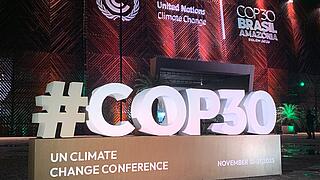EU climate protection targets for 2040: Where are we heading?

©plainpicture Pete Saloutos
In order for the EU to become climate-neutral by 2050, it has committed to reducing its greenhouse gas emissions by 55 per cent by 2030 compared to 1990. The process of setting the EU’s energy and climate targets for 2040 has just begun. In February, the European Commission recommended that emissions should be reduced by 90 per cent by that year.
A recent study conducted by Oeko-Institut on behalf of Agora Energiewende delineates the upcoming climate protection challenges in the EU and open questions for the target definition in 2024, including the fundamental definition of the 2040 climate target as well as important decisions in individual sectors such as agriculture and the new emissions trading system for buildings and transport.
The EU climate target for 2040: ambitious and consistent
The authors of the study emphasise that the setting of the climate target for 2040 will determine the further climate protection path to 2050. “The more ambitious the interim target for 2040, the more security we create in terms of the availability and the cost of energy,” says Jakob Graichen, Senior Researcher at Oeko-Institut and a co-author of the study. “However, issues of dependence on critical raw materials or combating energy poverty are also directly related to a proactive EU policy on climate protection. The recommendation of the EU Commission to reduce emissions by 90 percent is a step in the right direction.”
In addition to its level, the specific design of the target is also important. Carbon removals from the atmosphere will play a central role in achieving the overall target. Since negative emissions are often uncertain or only short-term storage is possible, separate targets should be set for residual emissions and removals for the EU. The treatment of aviation and maritime transport is also becoming more important because emissions from both sectors are continuing to rise. They should therefore be fully integrated in the EU’s climate target.
Emissions trading for buildings and transport
The new emissions trading system for road transport, buildings and other sectors (ETS 2) will start in 2027 alongside the existing emissions trading system for power generation and industrial plants (ETS 1). The emissions cap is initially set at 1,040 million allowances and will decrease by 5.35 percent each year. Under the current legislation, it would reach zero in 2044.
However, the development of emissions in the buildings and transport sectors in recent years shows how difficult it will be to achieve this. Between 2010 and 2020, there was a CO2 reduction of almost 25 million tonnes per year; without the effect of the Covid pandemic, the reduction would be less than ten million tonnes of CO2 per year. The reductions required to comply with the cap of 62.8 megatonnes of CO2 per year are significantly higher than both figures.
“This raises the question of the extent to which so-called negative emissions – that is, the removal of carbon from the atmosphere and its long-term storage – can be a solution to compensate for existing gaps between emissions and the cap in, for example, the transport or buildings sector,” says Graichen. “However, we must clearly define the sectors for which such negative emissions should be permitted and which technologies can be sensibly used to guarantee safe long-term storage.” The same question arises in emissions trading for large energy and industrial plants. The study discusses options for this, their potential and costs and how negative emissions can be integrated in the emissions trading system.
Emissions trading for agriculture?
Agriculture gives rise to approx. ten percent of the EU’s climate-damaging greenhouse gases. The sector has not achieved any significant emission reductions since 2005. Agriculture will therefore be the sector with the highest residual emissions by 2040. This is because nitrous oxide and methane emissions in agriculture are caused by natural processes for which there are only limited mitigation measures.
The study discusses various options for the design of targets and policy instruments for more climate protection in agriculture. These include pricing and tax models, integration in the new ETS 2 or establishing a third emissions trading system specifically for agriculture. For the latter, the experts are discussing technical aspects and key questions, such as which actors should be involved in the trading system, the emissions it should cover and how emission allowances can be allocated.




